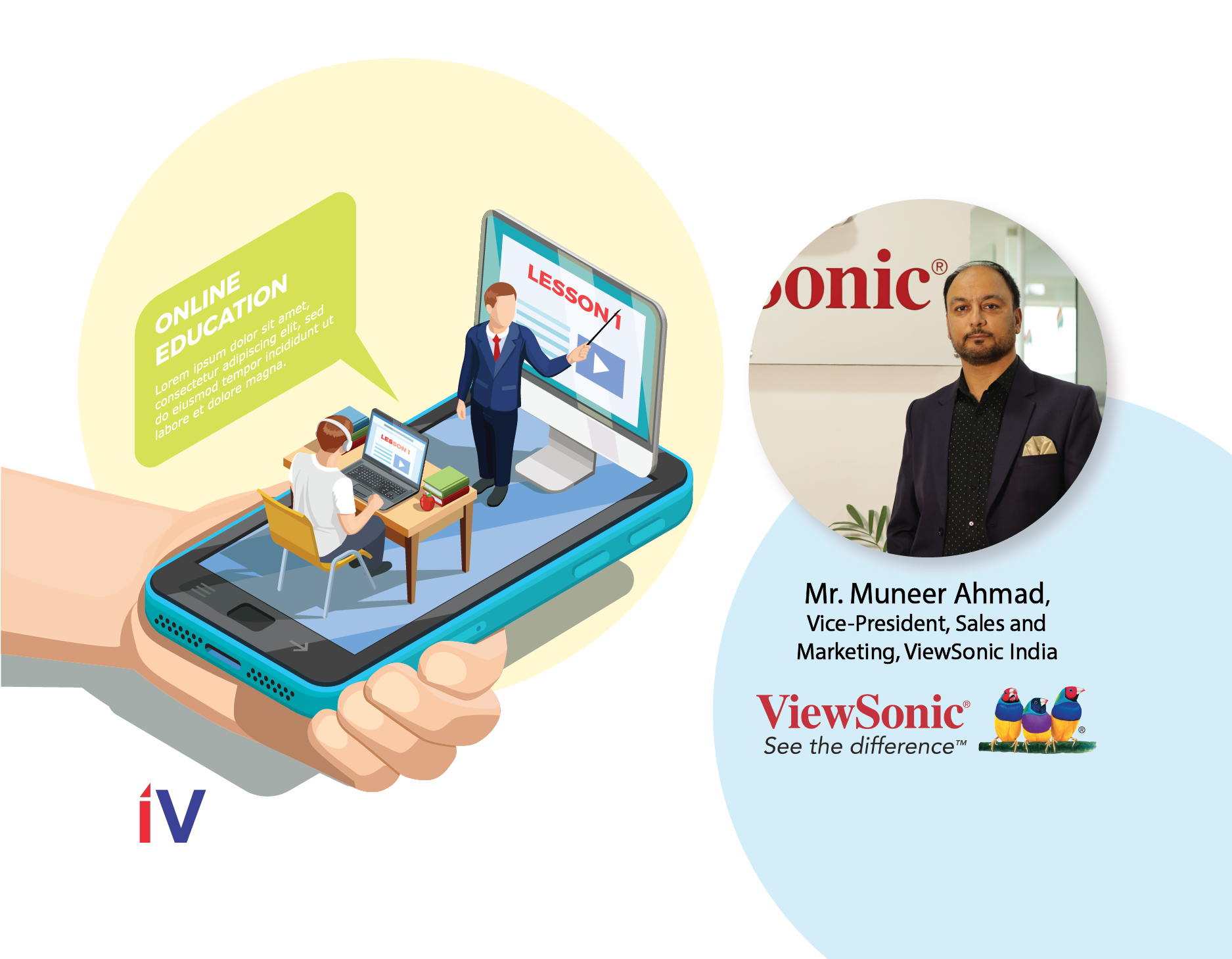By Mr. Muneer Ahmad, Vice-President, Sales and Marketing, ViewSonic India
With thousands of available solutions and tools offering seamless and hassle – free hybrid learning experience, choosing the right one can be a challenge. Hybrid learning certainly brought new challenges with it but the leaders, stakeholders and companies acted upon fast. Teachers are on the front lines of education at an unprecedented time, tailoring their teaching to virtual and hybrid formats without the luxury of time or resources to prepare. Various tech and audiovisual players have streamlined their presence by offering different Edtech products and solutions in this given time. From efficient products to enhanced software are grooving into the education ecosystem and improving the hybrid model.
Some essential tools to enhance the experience
Define your approach:
The very first step in selecting effective digital technologies that improve education is to precisely define the school’s pedagogies as well as its learning and teaching strategy.
Adapt Simplicity:
Students may be unfamiliar with all of the available platforms, applications, and technology. As a result, try to keep it simple by selecting only a few apps and platforms. The learning materials you employ should enable the virtual classroom to become more than just displays and text. Choose tools that support social interaction, such as conversation and discussion room features, the ability to share with several users, and options that allow teachers to give students the authority to lead discussions.
Visual Experience:
People respond to pictures, according to marketing study and science. With a positive reception to graphics comes increased engagement and retention. Choose apps and resources that make learning more visual. Look for materials that include films, photographs, live polls, games, or a digital whiteboard. Making it effortless for learners to engage and continue along is vital for quality learning and retention of information. A digital whiteboard device enables educators to connect with pupils in-person and via video with exceptional – and equal – clarity. To make the experience more productive, tech-enabled products become an integral part of the education ecosystem. Interactive displays available in various sizes is adopted in schools and institutes. The product drives a concrete methodology for learning, from being compatible with multiple users in one go-to logging in from anywhere and accessing and sharing files.
Platforms to support learning:
Moving away from traditional classrooms, use platforms that offer ample number of tools and features to enhance the learning experience for the students. These platforms should help make teaching easier for the educators as well and makes learning a two – way and a hassle – free process. Various collaborative software is also helping to enhance the teaching and learning experience. Embedded with efficient features such as file sharing, chat, video conferencing, easy management of documents, and managing classroom activities, it offers an intuitive and immersive experience.
Discussion Forums:
Discussion forums allow educators to transition from knowledge providers to knowledge facilitators. Students participate in collaborative learning by participating in online debates. The ability to participate in discussions in a flexible manner is critical to overcoming time and location constraints, as well as students’ various speed and learning styles, and so addressing the diverse demands of our student community. Notably, students who would not regularly participate in spoken input in class become much more engaged and visible in writing. Using forums aids flipped learning, in which academics include student conversations into live teaching sessions, promoting greater engagement.
Video recording:
Flipped classrooms and asynchronous teaching are excellent strategies to make the most of synchronous teaching time in a mixed learning environment. Delivering asynchronous lessons via video recordings allows students to learn at their own pace and in a more controlled manner. Students can also reflect on their learning with the correct design, bite-sized films, and reflective questions. This assists students in preparing for the synchronous sessions, hence increasing involvement and engagement.
Even after experimenting with remote or hybrid learning, educators’ questions and reservations regarding virtual learning may persist. But one thing is certain: more instructional resources are now available than ever before. These tools, designed with both teachers and students in mind, may lend life and vitality to the virtual classroom. Despite the fact that we have less direct interaction, the chance for engagement is higher than ever. Students have additional paths for collaborative learning available to them thanks to online polls, active presentations, video bulletin boards, breakout sessions, and more. Furthermore, the adaptability of these hybrid learning solutions makes it simple to switch between in-person and remote learning.









